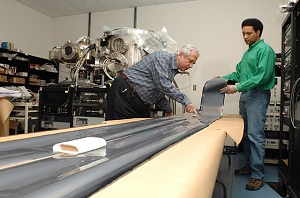Reviewing last week's solar energy news
 With spring popping up all over the place, the solar industry, which has been on a real tear in the U.S. and across the globe, is starting to explode like the first cherry blossoms of spring. From Michigan to California to Massachusetts and Brazil and more, the solar industry is evolving to a firmly rooted industry.
With spring popping up all over the place, the solar industry, which has been on a real tear in the U.S. and across the globe, is starting to explode like the first cherry blossoms of spring. From Michigan to California to Massachusetts and Brazil and more, the solar industry is evolving to a firmly rooted industry.
Before recapping all the solar news from last week, we should point out that last Friday was April Fool’s day, though we pride ourselves at Clean Energy Authority for accurate reporting, we had some fun last week. First we reported that Muammar Qaddafi converted Libya to solar in a misunderstood bid to cede power. We then reported that a newly discovered element, tempehnium, could convert 113.5 percent of the sun’s rays into electricity—and cure baldness. Both were obviously fake, sorry if there was any misunderstanding.
In the real news, California’s legislature finally passed the state’s renewable energy standard, which puts it one step closer to being law. If signed into law, which is likely, the standard will be the most aggressive in the country. It would require the state’s utilities to source 33 percent of their electricity from renewables by 2020. Right now it is only an executive order, which means it could be challenged by utilities.
Other states are also moving forward with solar legislation, some controversial, like legislation being proposed in Florida, which would give major utilities in the state an unprecedented amount of control over the solar market in the state. Another piece of legislation, introduced in North Carolina, would more than double the amount of solar in that state. More solar legislation is cropping up in states across the country even now.
Internationally, Brazil made the headlines last week when it purchased solar manufacturing equipment from Spire Corp., to launch the Tecnometal Equipamentos solar panel plant, which could create up to 100 new jobs in Sao Paulo, Brazil. It’s the latest step in the country’s bid to become an innovation powerhouse.
An Australian company, Sunengy, teamed up with Tata Power in India to launch an innovative concentrating photovoltaic (CPV) device. The 13.5 kilowatt pilot project in Mumbai, India, dubbed the Liquid Solar Array, consists of floating CPVs in a reservoir used for hydroelectric power generation.
Stateside, solar is powering Michigan’s recovery from the recession. A study released last week by the Environmental Law and Policy Center found that solar is the state’s fastest growing industry. It also found that the renewables industry, which includes wind, is repurposing old manufacturing plants to produce the green-edge technologies.
A lot of news last week surrounded new solar technologies. The U.S. Department of Energy announced America’s Next Top Energy Innovator program. The program will offer licensing for solar and renewable energy patents developed at national laboratories to entrepreneurs and startup companies at a significant discount, of up to $50,000 in upfront costs. The program was developed to encourage more innovative startup companies in the U.S.
While it wasn’t developed at a national laboratory, the Massachusetts Institute of Technology (MIT) unveiled research into a device, the Solar Leaf, that’s capable of mimicking photosynthesis to split water into hydrogen and oxygen using inexpensive materials. The lead researcher has founded SunCatalytix to commercialize the device.
And Pythagoras Solar is testing its photovoltaic window technology at the Willis Tower, formerly the Sears Tower. The building now has a 2-square-foot window that’s generating electricity using the technology.
Image courtesy of the University of Delaware.



